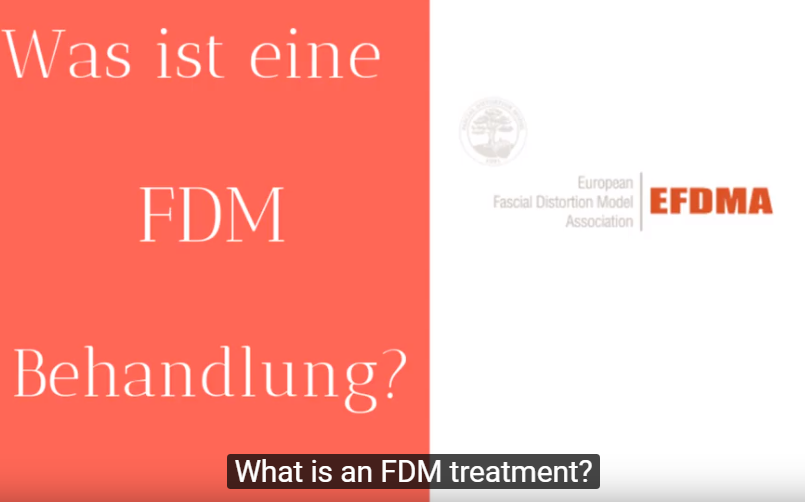The fasciae are part of the connective tissue and form the underlying framework of the human body.
If fasciae are impaired by injury or trauma, pain and limited function maybe the consequences.
The practical application of the fascial distortion model (FDM) facilitates a quick therapy of such complaints. With a specific examination the causative factors can be identified and corrected with special manual techniques by a well-trained FDM doctor or therapist.
The aim of every FDM intervention is to correct the anatomical arrangement of the fasciae. If an altered arrangement is corrected, an immediate improvement of loading capacity, mobility and/or pain reduction can be expected. Long periods of rest are not necessary and rapid resumption of activity is possible.
The fascial distortion model goes back to the American physician Stephen Typaldos D.O. He used specific maneuvers and manipulation techniques to treat fascial distortions. These are known as Typaldos method and are taught in FDM seminars according to the training and qualification guidelines defined by the European Fascial Distortion Model Association (EFDMA).
The Typaldos method is used in cases of:
- Acute pain due to sprains and dislocations of joints, acute lumbago, stiff neck
- Sport injuries, e.g. pulled ligaments, contusions, muscle fiber tears, etc.
- Back pain, low-back pain, shoulder and neck pain …
- Restrictions of movement
- Symptoms like numbness or tingling as well as loss of power or instability
- Certain internal problems after medical assessment
FDM doctors and therapists that are listed in the practitioner register on this website practice according to the guidelines of the European Fascial Distortion Model Association (EFDMA). They have undergone a thorough multi-stage training and guarantee safe and skilled treatment.
This flyer provides a synopsis of more detailed information: Patient Information Flyer EFDMA
A case example …
A female patient comes to a medical practice and reports that she twisted her ankle while practicing sport. The right ankle is clearly swollen and painful on palpation. The patient also describes pulling, burning pain and in doing so sweeps along the outside of her right ankle with her fingers. Further she is bothered by a stabbing pain at the anterior aspect of the ankle and she points at the spot with her finger. The mobility is restricted thus she can only walk with a limp.
Standard medical perspective and treatment:
The physician diagnoses a sprained ankle and advises rest, ice, compression and elevation. In addition he/she prescribes an ointment with antalgic and anti-inflammatory components. After a few weeks the patient can start to practice her sport again.
FDM perspective and treatment:
From an FDM perspective the complaints in the case example can be attributed to fascial distortions. These distortions can be corrected with certain handholds (manual maneuvers), which sometimes require quite a lot of force. After the treatment the patient can immediately walk normally again, and after the second treatment a few days later she can usually practice her sport without any restrictions.
When following the fascial distortion model the physician or practitioner looks at the described problems from a whole new angle. The focus in the FDM lies on a quick and effective treatment success achieved with manual treatment.

Find videos at the EFDMA Youtube channel about:
- What is an FDM treatment?
- What happens during an FDM treatment?
- When do I need an FDM treatment?
- and many more…
(English subtitles – german language)
